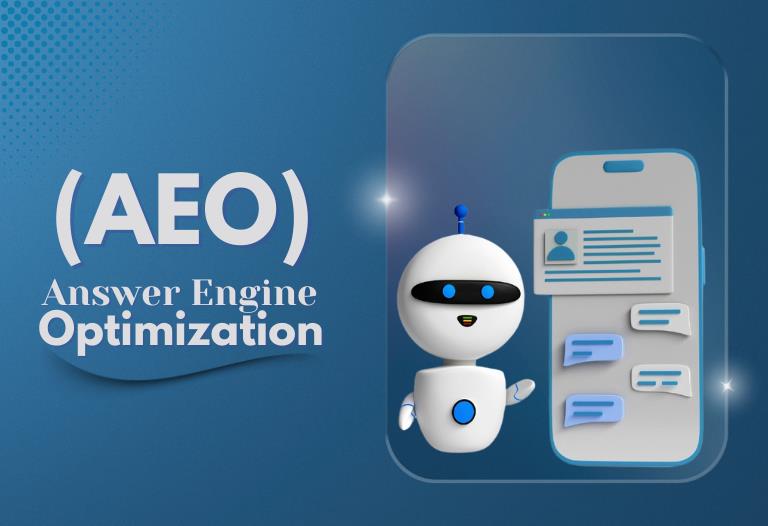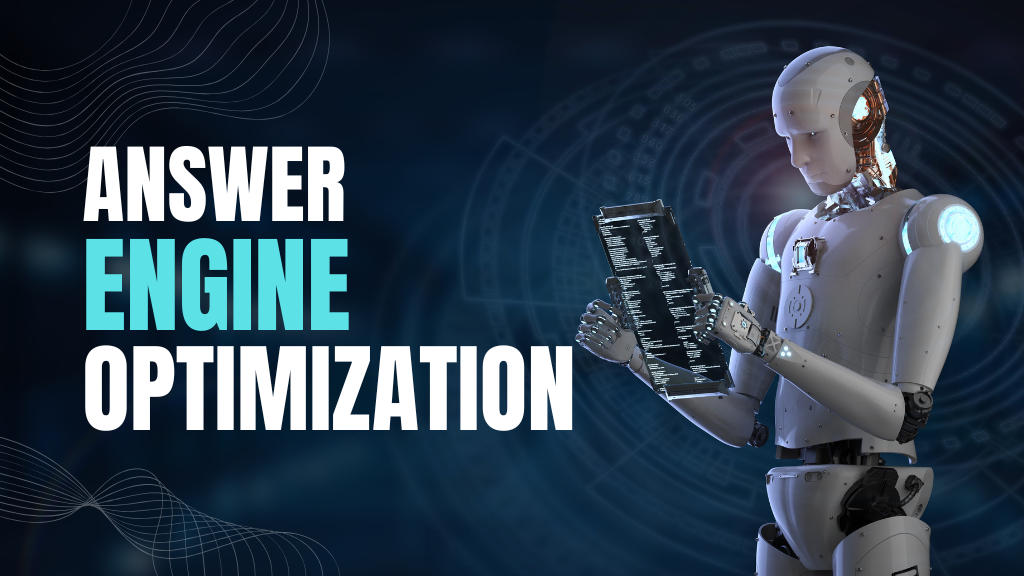
In the age of generative AI and voice assistants, traditional SEO is evolving rapidly. The rise of AI-powered search tools like Microsoft Copilot, Google’s Search Generative Experience (SGE), and ChatGPT has shifted the focus from ranking on search engine results pages (SERPs) to being the chosen answer in conversational interfaces. This new frontier is called Answer Engine Optimization (AEO)—a strategic approach to ensure your content is selected by AI systems as the most relevant and authoritative response.
What Is Answer Engine Optimization?
Answer Engine Optimization refers to the process of optimizing content so that it ranks not just on search engines, but within AI-driven platforms that deliver direct answers to user queries. These platforms include voice assistants (like Siri and Alexa), generative AI tools (like Copilot and ChatGPT), and search engines that now prioritize featured snippets and zero-click results.
Unlike traditional SEO, which focuses on keyword density, backlinks, and meta tags, AEO emphasizes clarity, structure, and semantic relevance. The goal is to make your content easily digestible and trustworthy for AI models that summarize and synthesize information.
Why AEO Matters More Than Ever
With the explosion of AI tools, users are increasingly bypassing traditional search results in favor of direct answers. Consider these trends:
- Zero-click searches now account for over 50% of Google queries.
- AI assistants are used by millions daily to answer questions, make decisions, and discover products.
- Featured snippets and answer boxes dominate mobile and voice search.
If your content isn’t optimized for these formats, you risk becoming invisible—even if your site ranks well in traditional SERPs.

Key Elements of Answer Engine Optimization
To succeed in AEO, you need to rethink how you structure and present information. Here are the core components:
1. Clear and Concise Answers
AI systems prioritize content that delivers direct, succinct answers. Use short paragraphs, bullet points, and summary boxes to make your content scannable.
Example: Instead of writing a long-winded explanation of “What is AEO?”, start with a one-sentence definition followed by a breakdown of its components.
2. Structured Data and Schema Markup
Implementing schema markup helps search engines and AI tools understand the context of your content. Use FAQ, HowTo, and Article schemas to increase your chances of being featured.
3. Semantic Relevance and Natural Language
AI models rely on semantic understanding rather than exact keyword matches. Use synonyms, related terms, and conversational phrasing to align with how users actually ask questions.
Tip: Optimize for questions like “How do I rank in AI search?” or “What is Answer Engine Optimization?” rather than just “AEO tips.”
4. Authority and Trust Signals
AI systems prioritize content from authoritative sources. Build credibility through backlinks, expert authorship, and citations. Include references to reputable sources and ensure your site has a strong domain reputation.
5. Featured Snippet Optimization
Featured snippets are prime real estate in AI-powered search. To target them:
- Use headers that match common queries (e.g., “How to optimize for AEO”).
- Provide direct answers immediately below the header.
- Format content in lists, tables, and step-by-step instructions.
How to Optimize Your Content for AEO

Let’s break down a practical strategy to implement Answer Engine Optimization across your site:
Step 1: Identify High-Intent Questions
Use tools like Google’s “People Also Ask,” Answer the Public, and AI chat interfaces to discover the questions your audience is asking. Focus on informational and transactional queries.
Step 2: Create Content That Answers Directly
Each page should aim to answer one primary question clearly. Use the inverted pyramid style—start with the answer, then provide supporting details.
Step 3: Use Conversational Formatting
AI tools prefer content that mimics natural conversation. Write in a tone that’s friendly, informative, and easy to understand. Avoid jargon unless your audience expects it.
Step 4: Optimize for Voice Search
Many AI responses are delivered via voice assistants. To rank here:
- Use long-tail keywords and question-based phrases.
- Keep answers under 30 seconds (about 40–50 words).
- Include local SEO elements if relevant.
Step 5: Monitor and Iterate
Use analytics tools to track which pages are being surfaced in featured snippets or AI responses. Adjust formatting, update outdated content, and test new structures regularly.
Measuring Success in AEO
Unlike traditional SEO, AEO success isn’t always reflected in traffic alone. Here’s how to measure impact:
- Featured Snippet Presence: Use tools like SEMrush or Ahrefs to see if your content appears in snippets.
- Voice Assistant Queries: Test your content on Alexa, Siri, and Google Assistant.
- AI Tool Citations: Ask AI platforms questions and see if your site is referenced.
- Engagement Metrics: Track time on page, bounce rate, and user interaction to gauge content usefulness.
The Future of Search Is Conversational

As AI continues to reshape how users interact with information, Answer Engine Optimization will become a cornerstone of digital strategy. Brands that adapt early will gain visibility in places where traditional SEO can’t reach—from smart speakers to AI dashboards.
Whether you’re a content creator, marketer, or business owner, now is the time to rethink your approach. Focus on clarity, authority, and relevance—and you’ll be well-positioned to thrive in the era of AI-powered search.
Final Thought: Answer Engine Optimization isn’t just a trend—it’s a paradigm shift. By aligning your content with the needs of AI systems and the expectations of modern users, you ensure your voice is heard in the conversations that matter most.
Let me know if you’d like a checklist version of this blog or want help optimizing a specific page!
Learn AEO and Digital Marketing with us.